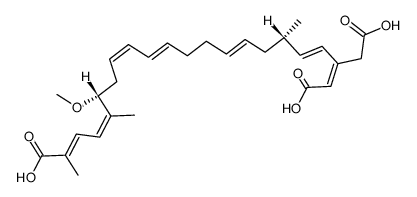Antiapoptosis chemicals prolong productive lifetimes of mammalian cells upon Sindbis virus vector infection.
A J Mastrangelo, S Zou, J M Hardwick, M J Betenbaugh
Index: Biotechnol. Bioeng. 65 , 298, (1999)
Full Text: HTML
Abstract
Viral expression systems allow for the rapid production of large amounts of recombinant protein in cell culture. In particular, Sindbis virus vectors now exist that make possible the expression of a variety of heterologous proteins in mammalian culture systems. Unfortunately, infection of cultured cells with Sindbis virus vectors typically results in apoptotic cell death, as demonstrated in the current study by DNA laddering and fluorescence microscopy. Fortunately, it has recently been demonstrated that apoptosis can be inhibited in vitro by certain chemical reagents that are capable of blocking specific steps during the cell death cascade. In this study, a rat prostate carcinomal cell line, AT3-neo, was infected with a Sindbis virus vector containing the gene for chloramphenicol acetyltransferase (dsSV-CAT) in the presence of several representative antiapoptotic chemicals and analyzed for cell viability as well as recombinant protein production. N-acetylcysteine (NAC), pyrrolidine dithiocarbamate (PDTC), bongkrekic acid (BA), and N-benzyloxycarbonyl-Val-Ala-Asp-fluoromethylketone (Z-VAD.fmk) all exhibited the capacity to limit apoptosis in the infected cells. In fact, after just 1 day, percentage viabilities of the cells exposed to chemical reagents were between 72% and 91%, compared with 44% for the untreated controls. Furthermore, cells maintained on these agents were able to survive the infection from 1 to 3 days longer than the control samples. In addition to providing gains in cell viability, chemical treatment allowed for higher levels of recombinant protein production in most cases. Maximum chloramphenicol acetyltransferase (CAT) productivities in cells maintained on BA, NAC, and Z-VAD.fmk were 1.7-, 2.2-, and 3.9-fold higher than those obtained from the untreated cultures. Consequently, the addition of chemical reagents to culture media as a means of inhibiting apoptosis may be a valuable tool in the cell culture industry, where cell death severely limits productivity levels and adds significantly to production costs.Copyright 1999 John Wiley & Sons, Inc.
Related Compounds
| Structure | Name/CAS No. | Molecular Formula | Articles |
|---|---|---|---|
 |
Bongkrekic acid
CAS:11076-19-0 |
C28H38O7 |
|
Changes in mitochondrial membrane potential during staurospo...
2000-06-23 [FEBS Lett. 475 , 267, (2000)] |
|
BCL-2 family members and the mitochondria in apoptosis.
1999-08-01 [Genes Dev. 13 , 1899, (1999)] |
|
Hydrogen peroxide-induced apoptosis is CD95-independent, req...
1999-01-21 [Oncogene 18 , 747, (1999)] |
|
Ethanol potentiates tumor necrosis factor-alpha cytotoxicity...
2000-05-01 [Hepatology 31 , 1141, (2000)] |
|
Induction of apoptosis by valinomycin: mitochondrial permeab...
1998-03-01 [Cell Death Differ. 5 , 214, (1998)] |